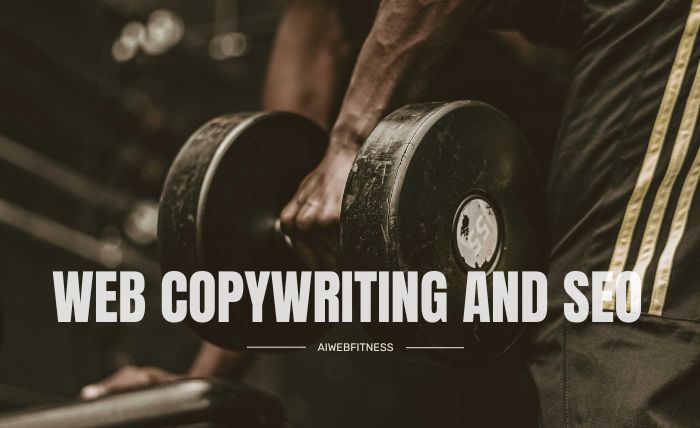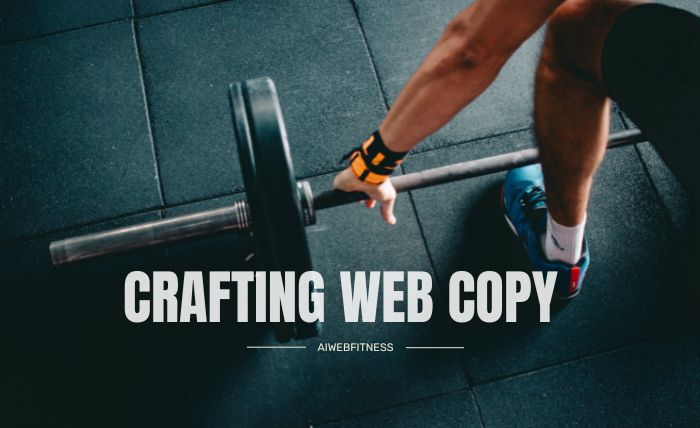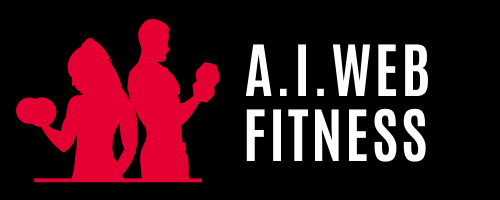Mastering Web Copywriting: Essential Guide for Fitness Trainers
Index
- Introduction
- Understanding Web Copywriting
- Fundamentals of Effective Web Copywriting
- Web Copywriting and SEO
- Crafting Web Copy for Different Website Sections
- Enhancing Web Copy with Persuasive Elements
- The Power of Storytelling in Web Copywriting
- Specialized Sections for Comprehensive Understanding
- Measuring and Optimizing Web Copy Performance
- Advanced Web Copywriting Strategies
- Common Mistakes
- FAQs
- Conclusion

Introduction
Diving into the Art of Web Copywriting
Discover the dynamic field of creating compelling content for online platforms. This guide delves into what makes writing for the web distinct and vital for achieving digital success.
We’ll explore the unique aspects that set it apart from traditional writing forms and why it’s a crucial element in your online strategy.
The Synergy Between SEO and Crafting for the Web
Understanding the close relationship between SEO and crafting effective online content is key. They unite to elevate your website’s visibility in search engine results.
We’ll uncover the techniques that enhance your site’s appeal, drawing more visitors and engagement.
The Significance of Crafting Online Content in Digital Marketing
In the realm of digital marketing, crafting persuasive online content is a game-changer. It goes beyond mere writing; it’s about creating content that captivates, engages, and drives action.
This guide is designed for writers, business owners, and the curious alike, offering insights into creating content that resonates with readers and ranks well on search engines.
Embark on the Journey
Prepare to immerse yourself in the nuances of creating effective online content. You’ll learn strategies to connect with your audience and make your website shine.
Let’s embark on this journey and discover how mastering the art of web content can profoundly impact your online presence.

Understanding Web Copywriting
This section provides foundational understanding, highlighting unique characteristics compared to traditional writing and emphasizing its crucial role in the digital world.
1.1 What is Web Copywriting?
This specialized form of writing focuses on creating engaging content for websites. Unlike traditional content, it is designed to capture interest and inspire action, tailored for internet users seeking quick solutions or engaging information.
1.2 Web Copywriting vs. Traditional Copywriting
The key distinction lies in its directness and clarity. Online content is typically concise, with web copywriters skilled in capturing attention quickly. This form is ideal for digital mediums like websites, emails, and social media, requiring a unique approach to effectively communicate online.
1.3 The Role of Web Copywriting in Digital Presence
This form of writing is pivotal in the digital landscape, serving as a bridge between websites and their visitors. It’s about crafting narratives that persuade, inform, and connect. Effective writing of this nature enhances a website’s visibility on search engines and helps build meaningful connections with the target audience.

The Fundamentals of Effective Web Copywriting
This section, focuses on the essential principles of effective web copywriting, emphasizing clarity, audience understanding, the art of headline writing, and the importance of simplicity.
2.1 Key Principles for Compelling Web Copy
Writing great web copy is an art. There are some key rules to follow. First, be clear and straight to the point. Your words should be easy to understand. Second, keep your audience in mind.
Think about what they need and how your words can help them. Last, be honest and real. People like to read something that feels genuine and true.
2.2 Identifying and Engaging Target Audiences
Knowing your audience is like knowing a friend. What do they like? What problems do they have? When you know who you’re writing for, you can make your words speak directly to them.
You can write content that answers their questions, solves their problems, and makes them feel like you really understand them.
2.3 Crafting Attention-Grabbing Headlines
A headline is the first thing people see. It’s like a sign on a shop door. You want it to be interesting so people will come in. Your headline should be short but powerful. It should make people curious and want to read more.
Think of a headline as a promise of what they’ll find if they keep reading.
2.4 Emphasizing Simplicity and Clarity
In web copywriting, less is often more. Simple words are best. Big, complicated words can confuse people. Your sentences should be short and to the point.
The easier your content is to read, the more people will enjoy it. Remember, you want your readers to understand your message easily.
Best Practices:
- Consistent Tone and Voice: Maintain a consistent tone and voice that aligns with your brand personality. This helps in building a recognizable brand identity.
- Include Strong Calls to Action (CTAs): Each piece of content should guide the reader towards a specific action. Make your CTAs clear, compelling, and easy to find.
- Use Storytelling Where Appropriate: Stories can make your content more engaging. Use real-life examples, anecdotes, or customer stories to make your points more relatable.
- Optimize for SEO without Compromising Quality: While incorporating keywords is important, ensure your content remains informative and engaging. Strike a balance between SEO and readability.
- Test and Refine: Use analytics to understand how your content is performing. Experiment with different approaches and refine your strategy based on what works best with your audience.

Web Copywriting and SEO
In this section, the guide delves into the relationship between web copywriting and SEO.
It offers practical advice on integrating keywords, the importance of meta tags and descriptions, and utilizing SEO tools to optimize web content.
3.1 The Intertwining of Web Copywriting and SEO
Web copywriting and SEO are best buddies. They work together to make your website shine online. SEO, or Search Engine Optimization, is about getting your website to show up on search engines like Google.
When you write web copy that’s SEO-friendly, you’re helping more people find your website. It’s like leaving a trail of breadcrumbs for people to follow to your site.
3.2 Techniques for Keyword Integration
Keywords are special words that people use to search for something on the internet. Using these words in your web copy helps search engines understand what your page is about.
But it’s important to use these words in a natural way. Think of sprinkling them through your text like adding salt to a dish – just enough to make it better, but not too much.
3.3 Role of Meta Tags and Descriptions
Meta tags and descriptions are like secret messages to search engines. They tell search engines what your web page is about. Meta tags are hidden in the code, but meta descriptions can be seen in search results.
A good meta description is like a mini-ad for your page. It should be short, catchy, and tell people why they should visit your page.
3.4 Utilizing SEO Tools for Optimized Web Copy
There are tools on the internet that can help you with SEO. They can show you what keywords to use, how to make your website faster, and even check if your website is doing well on search engines.
Using these tools can make your web copy even better and help more people find your website.
How-To Tips:
- Keyword Research: Use tools like Google Keyword Planner or SEMrush to find keywords relevant to your topic. Understand the search intent behind these keywords to better align your content with what your audience is seeking.
- Integrate Keywords Naturally: Once you have your keywords, integrate them into your web copy in a way that feels natural. Avoid keyword stuffing; instead, use them in a way that maintains the flow and readability of your content.
- Optimize Meta Descriptions and Titles: Craft compelling meta titles and descriptions using your primary keywords. These should be enticing and informative, giving a clear preview of your page content.
Best Practices:
- Focus on User Experience (UX): SEO isn’t just about keywords. Ensure your web pages are user-friendly, with a clear structure, fast loading times, and mobile responsiveness.
- Use Internal and External Links: Incorporate internal links to other relevant pages on your site and external links to authoritative sources. This practice enhances user experience and can positively impact SEO.
- Regularly Update Your Content: Keep your content fresh and up-to-date. Regular updates signal to search engines that your website is current and relevant, which can help improve rankings.
- Monitor Your SEO Performance: Use tools like Google Analytics to track how well your content is performing in terms of SEO. Look at metrics like page views, bounce rate, and time spent on page.

Crafting Web Copy for Different Website Sections
This section focuses on tailoring web copy for various key sections of a website. It provides straightforward strategies for creating engaging homepages, product and service pages, About Us pages, and blog articles.
It’s about emphasizing clarity and audience engagement while also considering SEO practices.
4.1 Strategies for Writing Effective Homepages
The homepage is like the front door to your website. It’s the first thing people see, so it needs to be welcoming and clear. A good homepage tells visitors what your website is all about and guides them to where they want to go.
Keep your homepage simple and focused. Use clear headings, short paragraphs, and invite people to explore more with links to other pages.
4.2 Developing Impactful Product and Service Pages
Your product and service pages are where you get to show off what you offer. Each page should focus on one product or service. Start by explaining what it is and why it’s great. Use clear, simple language.
If your product or service solves a problem, make sure to talk about that. And always end with a call to action, like ‘Buy Now’ or ‘Learn More.’
4.3 Creating Compelling About Us Pages
The ‘About Us’ page is where you tell your website’s story. It’s your chance to share who you are and what you stand for. This page should be personal and engaging.
Share your history, your values, and what makes you different from others. People like to know who they’re doing business with, so don’t be afraid to get a little personal.
4.4 Blogging and Article Writing Strategies for SEO
Blogs and articles are great for sharing helpful information and for SEO. Each blog post or article should focus on a topic your audience cares about. Use keywords naturally, just like in your other web copy.
Make sure your articles are easy to read, with headings, short paragraphs, and bullet points. And always end with something that encourages readers to engage, like asking a question or inviting comments.
Best Practices:
- Consistency Across Pages: Maintain a consistent tone and style across all sections of your website. This consistency helps in building a strong brand identity.
- Use of Strong Headlines and Subheadings: Craft catchy headlines and subheadings to capture attention and make your content skimmable.
- Optimize for Search Engines and Users: While SEO is important, always write with the user in mind. Your content should be easy to read, informative, and engaging.
- Calls-to-Action (CTAs): Each page should have a clear CTA, guiding visitors to the next step, whether it’s making a purchase, learning more about a service, or subscribing to a newsletter.
- Regular Updates: Keep your website’s content updated, especially on dynamic sections like blogs or news pages, to keep your audience engaged and informed.

Enhancing Web Copy with Persuasive Elements
This section focuses on enhancing web copy with elements that persuade and engage the reader.
It covers the use of persuasive writing techniques, the importance of clear calls-to-action, building trust through testimonials and social proof, and addressing customer pain points directly with solutions.
5.1 Incorporating Persuasive Writing Techniques
Persuasive writing is all about convincing your readers. It’s like being a friendly guide who helps people decide. Use words that create a picture in their minds and make them feel something.
Show them how their life can be better with what you’re offering. Use stories, facts, and examples to make your case stronger. Remember, you’re not just telling them; you’re helping them see why they need what you have.
5.2 Effectively Using Calls-to-Action (CTAs)
CTAs are like signposts that tell your readers what to do next. They should stand out and be clear. Use action words like ‘Buy Now,’ ‘Learn More,’ or ‘Sign Up.’
Place your CTAs where they’re easy to see and after you’ve explained the benefits of what you’re offering. A good CTA is like a friendly nudge, encouraging your readers to take the next step.
5.3 Building Trust with Testimonials and Social Proof
Testimonials and social proof are like your cheering squad. They show your readers that other people trust you and are happy with what you offer. Include quotes from happy customers, awards, or ratings on your website.
This kind of proof makes people more comfortable choosing you, as it feels like others have already taken the leap and are glad they did.
5.4 Addressing Customer Pain Points with Solutions
Think about the problems your readers are facing. Your web copy should show that you understand these problems and have a solution. Explain how your product or service can make their lives easier or better.
When you talk directly about their struggles and offer a solution, your readers are more likely to believe that you can help them.
Best Practices:
- Balanced Use of Persuasive Elements: Ensure that your persuasive techniques are balanced and don’t overshadow the informative aspect of your content. Avoid coming off as too salesy.
- Test and Refine CTAs: Regularly test different versions of your CTAs to see which ones perform better. Use A/B testing for this purpose.
- Authentic Testimonials: Use genuine testimonials rather than generic, overly promotional ones. Authentic stories add more credibility to your copy.
- Understanding Customer Needs: Continuously gather feedback and insights from your customers to understand their evolving needs. Tailor your copy to reflect these insights.

The Power of Storytelling in Web Copywriting
This section delves into the captivating world of storytelling and its significance in web copywriting.
It emphasizes how stories can create a more engaging and emotionally resonant experience for website visitors, providing practical examples and tips for weaving narratives into various aspects of web content.
6.1 Utilizing Storytelling to Engage Visitors
Storytelling in web copywriting is like sharing a journey with your readers. It’s not just about selling a product or service; it’s about connecting with your audience on a deeper level.
Share stories about how your business started, the challenges you’ve overcome, or how your product has helped others. Good stories make your brand more relatable and memorable.
They turn your website into a place where people can connect and feel understood.
6.2 Examples and Tips for Integrating Stories into Web Copy
To use storytelling effectively, think about what your audience might find interesting or inspiring. You could share customer success stories or write about the unique features of your products in a narrative style.
For example, instead of just listing product features, tell a story about how these features came to be or how they can fit into your customers’ daily lives. Remember, the best stories are those that your readers can see themselves in.
How-To Tips:
- Identify Relatable Stories: Look for stories within your brand or customer experiences that resonate with your target audience. These could be success stories, challenges overcome, or unique aspects of your journey.
- Integrate Stories into Web Copy: Use storytelling techniques to weave narratives into your content. Start with a compelling introduction, add context, build up to a climax, and end with a resolution that ties back to your product or service.
Best Practices:
- Keep Stories Relevant and Focused: Ensure that your stories are relevant to your product or service and contribute to the overall message of your web copy. Avoid adding narratives that don’t enhance the user’s understanding or engagement with your brand.
- Use Visuals to Complement Stories: Enhance your storytelling with relevant images, videos, or infographics that help illustrate the narrative and make it more engaging.
- Make It Personal and Authentic: Personalize your stories by including real-life characters or situations. Authenticity makes your brand more relatable and trustworthy.
- Test Different Storytelling Formats: Experiment with different ways of storytelling, such as case studies, customer testimonials, or behind-the-scenes insights, to find what resonates best with your audience.
Specialized Sections for Comprehensive Understanding
This section provides specialized insights and strategies for different aspects of web copywriting. It covers creating urgency, the subtleties of microcopy, tailored approaches for different website sections, and the importance of integrating customer research and feedback into the writing process.
This chapter aims to give a more in-depth understanding of specific elements that enhance web copy and improve user experience.
7.1 Creating Urgency in Web Copy: Techniques and Examples
Creating a sense of urgency in your web copy is like telling your readers, “Don’t miss out!” Use words that make people feel they need to act fast, like ‘limited time,’ ‘exclusive offer,’ or ‘hurry.’
For example, if you’re selling a product, you could mention that there’s only a few left in stock. This makes people think, “I need to buy this now before it’s too late.”
7.2 Writing Effective Microcopy: Importance and Strategies
Microcopy is the small bits of text on your website, like instructions, error messages, or form field labels. Even though they’re small, they’re super important. Good microcopy guides users smoothly through your website.
It’s clear, helpful, and sometimes even fun. For example, instead of a boring ‘loading’ message, you might have something like ‘We’re getting your pages ready to wow you!’
7.3 Detailed Breakdown for Specific Web Sections: Home, About, Services, Products
Each section of your website needs different kinds of writing. For your home page, keep it welcoming and to the point. On your ‘About’ page, be personal and tell your story.
For services or products, focus on benefits and why they’re great. Each section has its job, like welcoming visitors, telling your story, or selling your stuff.
7.4 Integrating Customer Research and Feedback in Copywriting
Using what you know about your customers makes your web copy better. It’s like having a conversation where you really listen. Use surveys, feedback, and comments to learn what your customers like and don’t like.
Then, use that information in your writing. If many customers ask the same question, answer it in your web copy. Show them you’re listening and you care about what they think.
Best Practices:
- Balance Urgency with Authenticity: While creating urgency, avoid exaggerations that could erode trust. Ensure your claims about limited availability or special offers are truthful.
- Keep Microcopy User-Friendly: Use a friendly and helpful tone in your microcopy to enhance the user experience. Avoid technical jargon that might confuse users.
- Customize Each Web Section: Each part of your website serves a different purpose. Tailor the tone, style, and content accordingly to ensure each section effectively fulfills its role.
- Use Customer Insights Proactively: Don’t just collect customer feedback—actively use it to make informed adjustments to your web copy, ensuring it remains relevant and resonant with your audience.

Measuring and Optimizing Web Copy Performance
This section focuses on the crucial aspects of measuring and optimizing web copy performance. It guides the reader through understanding key metrics, utilizing analytical tools for optimization, and employing A/B testing for continuous improvement.
This is essential for you to ensure your web copy not only attracts visitors but also effectively engages and converts them.
8.1 Key Metrics for Assessing Web Copy Effectiveness
To know if your web copy is working well, you need to look at certain things. These are called ‘metrics,’ and they’re like clues that tell you how your website is doing.
For web copy, you want to check how many people visit your pages, how long they stay, and if they do what you ask them to do, like buy something or sign up. These metrics help you understand what’s working and what’s not.
8.2 Tools and Techniques for Analysis and Optimization
There are tools on the internet that can help you check your web copy. They can tell you things like which pages are popular and which ones people leave quickly. With these tools, you can see what needs to be better.
Maybe you need clearer words or more interesting stories. These tools help you make smart changes to your web copy.
8.3 Best Practices for A/B Testing and Ongoing Improvement
A/B testing is like an experiment for your website. You make two versions of a page and see which one people like more. Maybe one version has a different headline or a different picture.
By comparing the two, you can find out what works best. And remember, improving your web copy is a never-ending job. Always look for ways to make it better, clearer, and more interesting.
Best Practices:
- Regular Content Audits: Periodically review and update your web content. Remove or revise outdated information, improve SEO, and ensure all content aligns with your current brand strategy.
- Responsive Design Optimization: Ensure your web copy is optimized for different devices, especially mobiles, as a significant portion of web traffic comes from mobile users.
- User Experience (UX) Focus: Monitor feedback on the user experience of your website. Adjust copy to improve navigation, readability, and overall user engagement.
- Leverage User Feedback: Collect user feedback through surveys, comments, or direct customer interactions. Use this feedback to refine and optimize your web copy for better performance.
- Monitor Competitor Performance: Keep an eye on your competitors’ web copy strategies. Learn from their successes and mistakes to inform your own web copy optimization efforts.
Advanced Web Copywriting Strategies
This section addresses advanced strategies in web copywriting, focusing on writing for a diverse global audience, staying ahead with future technological trends like AI.
It is important to keeping web content updated and relevant.
9.1 Writing for a Global Audience: Localization and Cultural Nuances
When your website reaches people around the world, your words need to make sense to everyone. This is called ‘localization.’ It means you adapt your web copy to fit different cultures and languages.
It’s like speaking in a way that feels familiar to people from different places. Pay attention to cultural differences and use words that everyone can understand and relate to.
9.2 Future Trends: AI, Machine Learning, and Web Copywriting
The future of web copywriting is exciting! Technologies like AI (Artificial Intelligence) and machine learning are starting to play a big part. They can help write copy, suggest improvements, and even predict what kind of writing works best.
Imagine having a smart helper that can give you tips on making your web copy even more amazing!
9.3 Keeping Web Copy Updated and Relevant
The internet is always changing, and so should your web copy. Keep your content fresh and up-to-date. If something changes in your business or industry, update your website to reflect that.
Regularly check your pages and see if there’s anything outdated or not as good as it could be. Keeping your web copy current makes sure it stays effective and keeps your readers coming back.
Best Practices:
- Adaptability in Global Markets: Be flexible in your approach when writing for different cultural contexts. Avoid idioms or references that might not translate well across cultures.
- Ethical Use of AI and Machine Learning: While leveraging AI for content creation, ensure that the final output maintains your brand’s voice and ethical standards. Use AI as a tool to enhance creativity, not replace it.
- Continuous Learning and Adaptation: The digital landscape is constantly evolving. Dedicate time for continuous learning and stay updated with the latest trends in web copywriting and SEO practices.
- Engagement with Industry Communities: Participate in web copywriting and marketing forums, attend webinars, and join professional groups. Engaging with a community of peers can provide valuable insights and keep you informed about industry developments.
- Testing and Experimentation: Don’t be afraid to experiment with new formats, styles, or technologies in web copywriting. Test different approaches and analyze their effectiveness to find what works best for your brand.

Common Mistakes to Avoid in Web Copywriting
When it comes to writing web copy for your fitness website, there are a few common pitfalls you should be aware of. Avoiding these mistakes can significantly improve the effectiveness of your website in attracting and retaining clients.
- Overlooking SEO: One of the biggest mistakes is ignoring SEO (Search Engine Optimization). Not using the right keywords or failing to optimize your web pages can make your site hard to find on search engines.
- Ignoring Mobile Users: In today’s world, most people use their phones to browse the internet. If your site isn’t mobile-friendly, you might lose a lot of potential clients.
- Too Much Jargon: It’s great to show your expertise, but using too much technical language can confuse people who are new to fitness. Keep your language simple and accessible.
- Lack of Clear CTAs: Every page on your website should guide the reader to take action, whether it’s signing up for a newsletter or scheduling a training session. Unclear or missing Calls-to-Action (CTAs) can result in missed opportunities.
- Neglecting the Power of Storytelling: People love stories. Failing to use personal stories or client success stories can make your content less engaging and relatable.
- Not Updating Content Regularly: Outdated content can make your website feel stale. Regular updates keep your site fresh and encourage visitors to come back.
- Ignoring Website Analytics: Not keeping track of your website’s performance means you won’t know what’s working and what’s not. Use analytics to refine your strategy.
- Inconsistent Brand Voice: Your website should reflect a consistent brand voice that aligns with your fitness philosophy. Inconsistency can confuse your audience about who you are and what you stand for.
- Failing to Proofread: Spelling and grammar mistakes can make your website seem unprofessional. Always proofread your content before publishing.
- Overlooking Customer Engagement: Your website should not just be informative; it should also engage your audience. Failing to encourage interaction, such as comments or shares, can lead to less engagement and lower visibility.
By steering clear of these common mistakes, you can create a more effective, engaging, and user-friendly website that truly represents your fitness brand and appeals to your target audience.
FAQs
Web copywriting is the craft of writing text for websites aimed at engaging readers and prompting action, such as making a purchase, signing up for a newsletter, or clicking on a link. It combines marketing, SEO, and creative writing skills.
Web copy should be reviewed and updated regularly, at least every 6-12 months, to ensure it remains relevant, accurate, and SEO-optimized. Frequent updates are also beneficial for keeping up with changing market trends and search engine algorithms.
Yes, effective web copywriting can significantly improve sales. It does so by engaging the reader, highlighting the benefits of products or services, addressing customer pain points, and guiding them towards making a purchase through strong CTAs.
A good web copywriter skillfully blends persuasive writing, SEO knowledge, and an understanding of the target audience. They create content that resonates with readers, drives engagement, and aligns with the brand’s voice and objectives.
Keywords are essential as they help search engines understand the content’s relevance to search queries. However, they should be used naturally and judiciously to avoid keyword stuffing, which can negatively impact readability and SEO.
Calls-to-Action (CTAs) are critical in guiding readers towards a desired action, such as buying a product, contacting the company, or downloading a resource. Effective CTAs are clear, compelling, and strategically placed to maximize conversion rates.
The effectiveness of web copywriting can be measured through metrics like conversion rates, bounce rates, website traffic, and SEO rankings. Tools like Google Analytics provide insights into how users interact with the content.
Yes, web copy should be optimized for both mobile and desktop. Mobile copy needs to be concise due to smaller screens and shorter attention spans, while desktop copy can be more detailed. However, the core message and branding should remain consistent across both.
Use web analytics tools to track metrics like website traffic, bounce rate, conversion rate, and time spent on pages. This data can help assess the effectiveness of your content and guide improvements.
Avoid overly technical language that may confuse beginners, neglecting SEO, not updating content regularly, ignoring mobile optimization, and failing to align the copy with your brand voice and target audience’s needs.
Conclusion
Key Takeaways and Embracing Continuous Learning
Recap of Effective Web Copywriting
We’ve delved into the art of persuasive writing, the power of storytelling, and the necessity of keeping web copy relevant and up-to-date. Each chapter has given us tools and insights to make web copy not just good, but great.
The Path Ahead: Continuous Learning and Adaptation
The world of web copywriting is always evolving. To stay on top of your game, keep learning and adapting. Embrace new trends, try out new tools, and always be ready to refine your skills.
Remember, the best web copywriters are those who never stop exploring and improving. Stay curious, stay creative, and keep pushing your web content to new heights.
As you apply what you’ve learned from this guide, remember that web copywriting is a blend of art and science. It’s about understanding people, using the right words, and always aiming to connect and engage.
Whether you’re writing for a small blog or a big corporate website, the principles we’ve discussed will guide you towards creating impactful, meaningful web content.
Thank you for joining us on this journey through the essentials of web copywriting. Here’s to your success in crafting compelling, effective web content that resonates with audiences and achieves your digital marketing goals!
